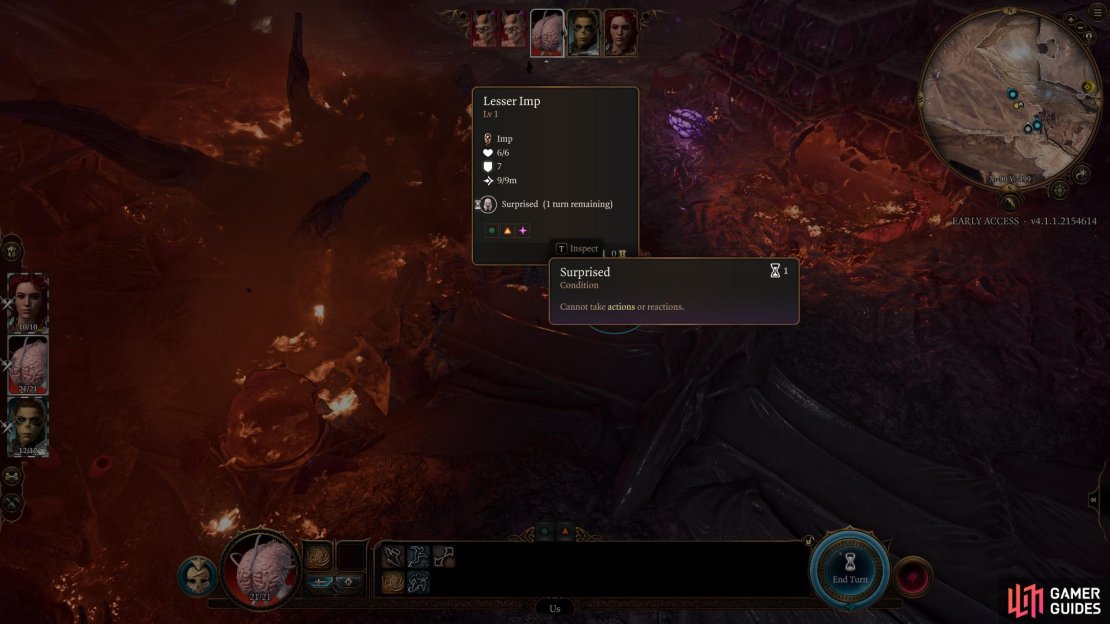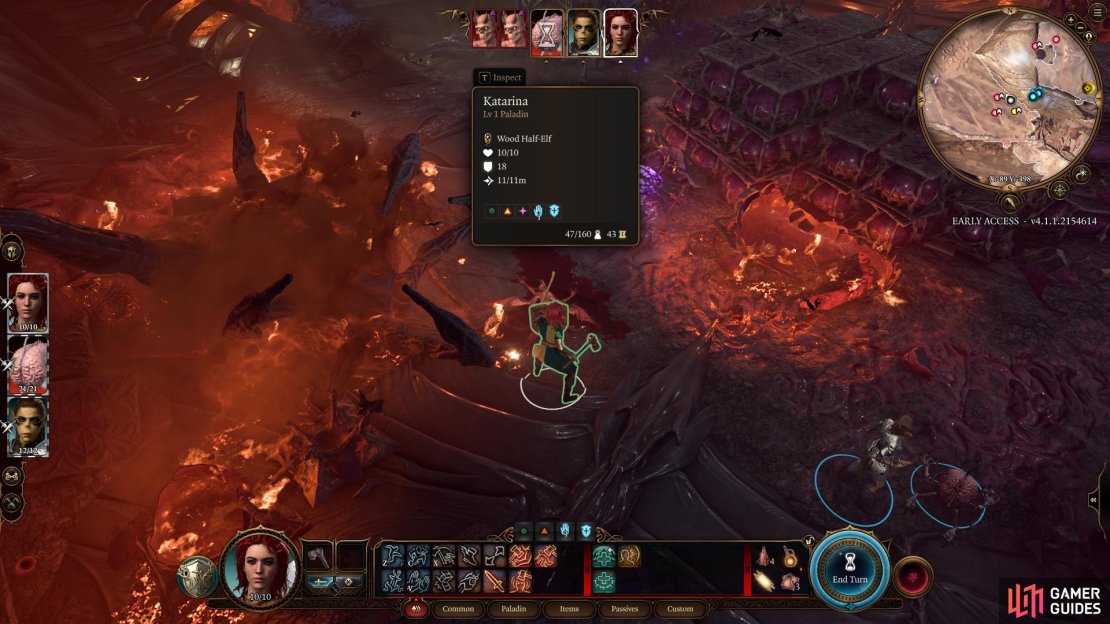Despite being a turn-based game, there is some variability with how encounters play out due to two factors - Surprise and Initiative. This page will discuss the Surprise and Initiative mechanics in Baldur’s Gate 3.
Enemies that are surprised cannot move, take actions or make reactions during the first round of combat.
How Surprise Rounds Work in Baldur’s Gate 3¶
Not all fights begin on equal footing - you’re generally able to spot enemies roaming around as you explore, and if you’re able to approach from behind, while sneaking or invisible, or otherwise engage enemies without them noticing you, the enemy will be unable to move, take an action or perform Reactions during the first turn of combat. Basically this gives your party a free round at the start of combat. Initiative is otherwise rolled normally and combat proceeds like any other round of combat.
Combat Rounds in Baldur’s Gate 3¶
Combat in Baldur’s Gate 3 is divided into rounds, during which each participating character - friend and foe - will get to take a turn. In a typical combat round each character will be able to move a set distance, perform an Action (this includes making ranged or melee attacks and casting spells) and a Bonus Action (shorter actions that take less time - drinking potions, using certain class abilities, attempting to hide, shoving enemies, etc.). Once a character has used all their actions or opted to end their turn, they won’t be able to act again until the next combat round, after every other character has taken a turn.
At the start of combat, every participate will make an Initiative Roll.
Initiative in Baldur’s Gate 3¶
In turn-based games like Baldur’s Gate 3, going first in combat is a huge boon, potentially allowing you to concentrate fire on a foe (or foes) and pick them off before they get a chance to act, buff yourself or debuff enemies to hinder their efforts, take the high ground, and generally do your worst to give yourself an unfair advantage. Each character’s turn order is determined by their Initiative Roll, which is made at the start of combat. Your Initiative Roll is equal to d20 + Dexterity Modifier, so faster characters tend to act first in combat.
If multiple characters you control end up adjacent in the turn order (see the portraits on the top of the screen) you can switch between them at will.
Shared Initiative¶
When characters you control end up adjacent on the turn order, you can freely swap between them at any time. They don’t need the same Initiative Score to do this - if the various Initiative Rolls by combatants ended up with characters you control acting third, fourth and fifth, you could swap between those three starting with the first of the trio to take a turn. You don’t even need to complete all the actions for a single character - you can move with one, switch to another, take an action, then switch back to the first. Just select the desired character’s portrait on the turn order atop the screen.



No Comments